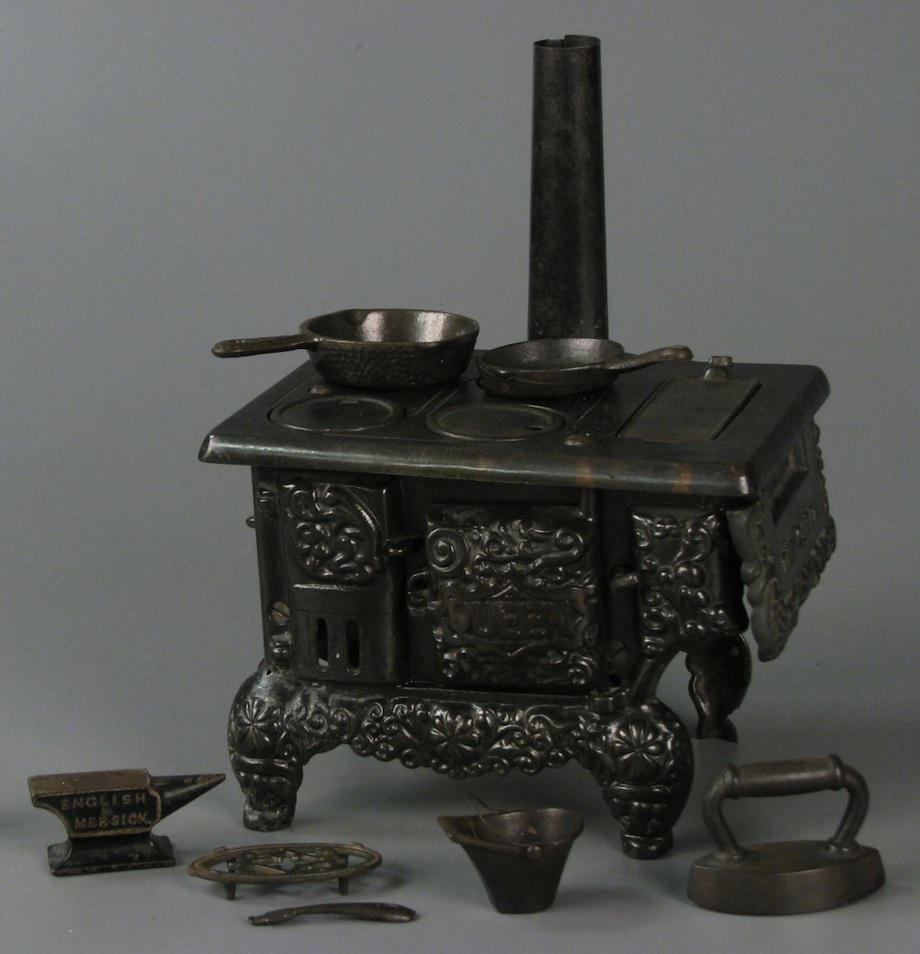The Vault is Slate’s brand-new history blog. Like us on Facebook, and follow us on Twitter @slatevault. Find out more about what this space is all about here.
Little misses in the first decades of the twentieth century were expected to learn how to cook for a household, so they needed something to practice on—something real. The Queen, a cast-iron and tin baby stove from 1915, burned coals or wood in its belly, while this lime-green metal toy stove from 1930 plugged into the wall. Both stoves had open burners, just like Mom’s.
These miniature stoves, part of a big collection of housekeeping toys at the Strong National Museum of Play, are relics of a sweet spot in history: Children were special enough to merit the production of tiny play versions of everyday objects, but parents hadn’t yet begun to worry obsessively over their everyday safety.
Production on tiny stoves ceased during WWII, as materials became scarce. By the time the Easy-Bake Oven, which used a lightbulb as a heat source, came out in 1963, the era of easy access to hot coals was over.

Online Collections, The Strong National Museum of Play. Object ID 112.135; gift of Margaret Zanghi in memory of Magdalena Lahm Belanger.

Online Collections, The Strong National Museum of Play. Object ID 91.458; manufactured by Metal Ware Corp., Two Rivers, WI.